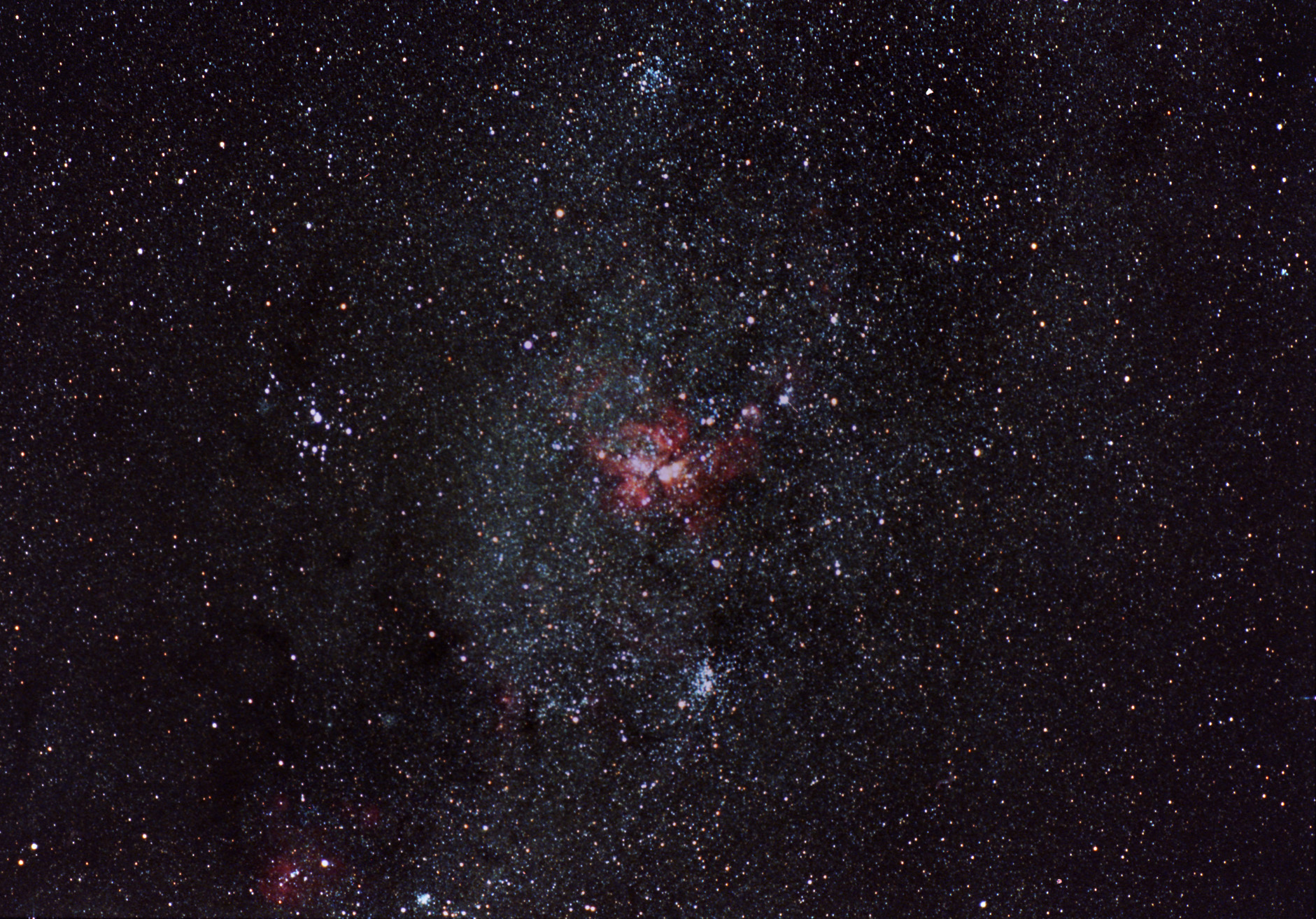
Eta Carinae, also known as the Keyhole Nebula, was first discovered by Halley in 1677. At that time, it was recorded by astronomers as a 4th magnitude star. Over the years, it varied irregularly. Eta Carinae reached a maximum in April 1843, at which time it was the brightest star in the sky with the sole exception of Sirius. It is a super massive blue star; so massive it is unstable. The star has ejected vast clouds of gas forming a nebula surrounding the star. The star is expected to explode some day in a massive supernova explosion.
Eta Carinae is located in one of the most splendid areas of the sky in the Southern Milky Way. It is not visible from most Northern Latitudes.
This photo was taken at the Las Campanas Observatory in Chile. The photo was taken with a Nikon F2 camera using a 105mm Nikon lens at f2.5 and Kodak PJM multispeed film. The camera was mounted piggyback on a Takahashi FS-78 refractor telescope carried on an EM-10 mount that was guided using an ST-8XE CCD.
NGC 3372
Constellation: Carina
RA: 10h 43m 50.0s Dec: -59d 52' 00"
(J2000)
October 11, 2013
Photo by Sid Leach
Las Campanas Observatory, Chile
Recent Images.
Complete list of images.
Description of equipment used to acquire images.
Home
Feedback and comments should go to Sid